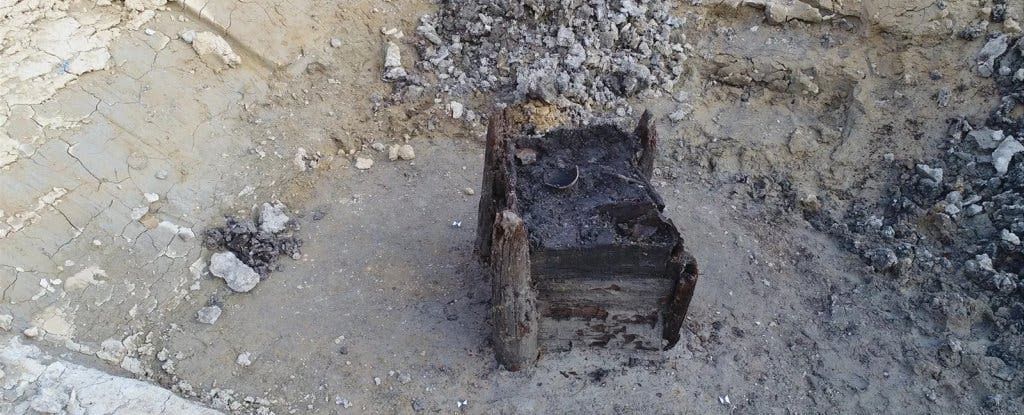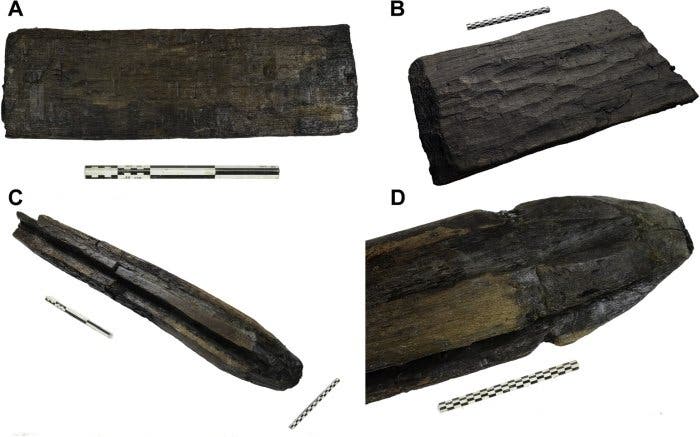
The year is 5256 BC. We’re in the Early Neolithic, in a place not exactly close to any settlement. What do you want to do if you want to drink some water but there’s no river nearby? Well, you start digging a well, of course. Start chopping down some trees and build a wooden frame.
That’s probably how the thought process went for ancient humans in what is today the Czech Republic. The well was found during construction works for a motorway in the Bohemia region. It’s the third Early Neolithic well discovered in the country in the past four years.
It’s not clear how common wooden wells were at the time. Currently, just 40 or so Neolithic water wells are known in Europe, says Michal Rybnicek, one of the authors of a new study describing the find.
The well measures 80 by 80 cm (31.5 x 31.5 inches) and 140 cm (55 inches) in height. The well lining is excellently preserved.
“A chest-like well lining was formed by four oak corner posts, each with two longitudinal grooves, set at 90 degrees to each other, in which oak planks were inserted horizontally in seven layers,” the archaeologists write in the study.
“The diameter of the posts ranged from 15.5 to 22 cm (6-8.7 inches) and they had 33 to 80 tree rings.”
A few pieces of pottery were also discovered, but other than the wooden structure itself, not much was recovered from the site. But the wood was in excellent shape, allowing for precise dating.

Researchers used dendrochronological methods to date tree rings to the exact year they were formed. They concluded that the well was built between 5256 and 5255, but interestingly, two of the corner posts were built from trees which felled a few years earlier. The first post came from a tree felled 3-4 years earlier, and the other one 9 years earlier. It’s not entirely clear why there was such a big gap in construction, but is probably owed to practicality more than anything else.
For the production of the well lining, the builders employed 200-year-old oaks with a diameter of at least 60 cm. Cutting down and transporting trees of such a size and weight was no easy feat. If such a tree had been felled nearby and not used entirely, it would make sense to re-use it instead of chopping down a new tree. Meanwhile, other elements of the well did not require such thick trees and could be built from younger trees which are easier to cut down.
No settlement has been discovered in the area, suggesting that this well probably lied on a road or route that Neolithic people would sometimes take.
The newly-discovered well is not the oldest known well in the world. Two wells in Israel date from 6500 BC, and two other wells in Cyprus go back even further, to 7500 BC — they weren’t even built with wood, they were forged directly into rocks.
However, this may be the oldest wood object in the world — it’s certainly the oldest dendrochronologically dated archaeological wood construction. Carbon dating, sometimes used for objects of this age, can have significant inaccuracies.
The most intriguing part about this find, however, is not just its age, but also its design. Until recently this construction design (with grooved corner posts and inserted planks) was only known from the Bronze Age, Roman times and the Middle Ages. The fact that it was also present in the Neolithic, thousands of years earlier, indicates that available technology (tools made from stone, bones, or wood) was advanced enough for sophisticated carpentry.
A Neolithic well built with similar technology had been previously discovered in the Czech Republic, but this one is older and features a unique design, researchers conclude.
The study has been published in the Journal of Archaeological Science.






